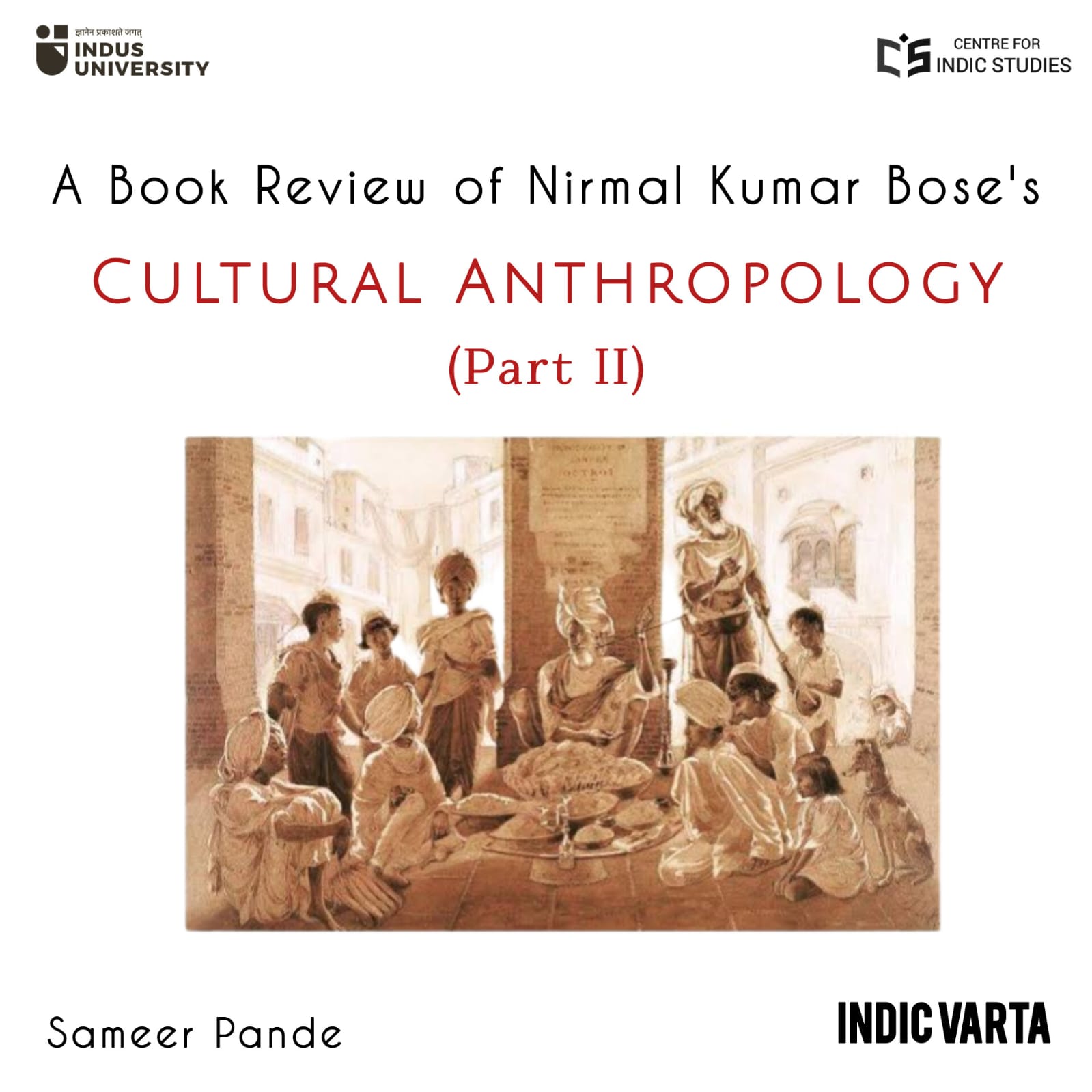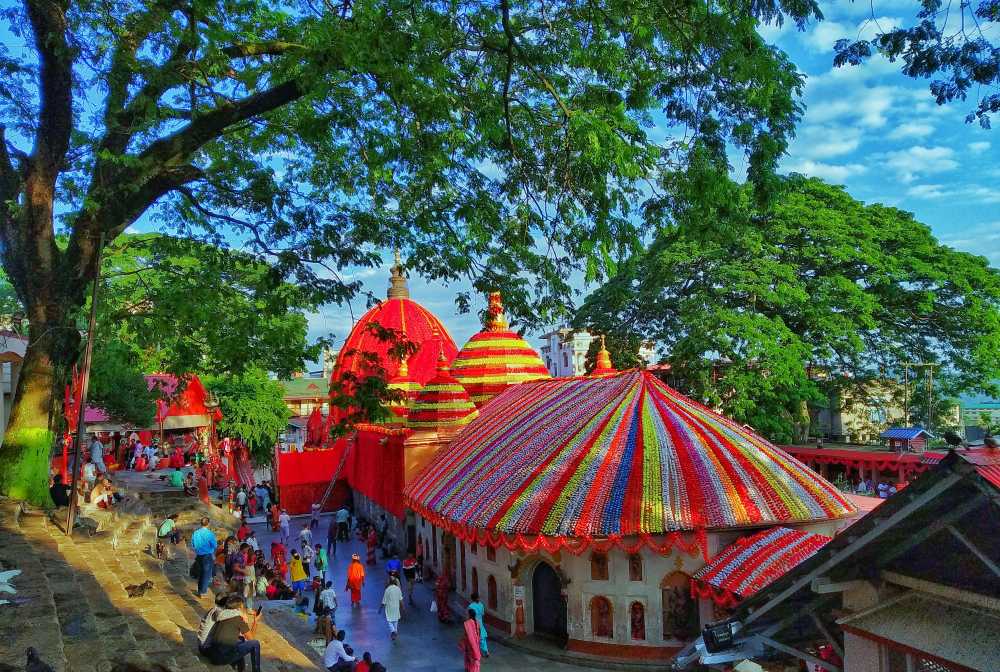- Visitor:47
- Published on:
Now I am become Death, the Destroyer of Worlds
Apart from the Indians, there are few who have openly declared that creation, sustenance, and destruction of this mysterious world is the task of one frenemy. The power of the world is not always the “All-good” Durga, but it is also congruent to Kali- the dancing, devastating and destructive one. The coefficient (which unites in action to produce a given effect) of life /Kurukshetra, himself is the charioteer or guide and the creator of living life. Through all these turmoil and conflicts, starting from global to the system, societal, household, relationship, and professional till petty personal level, to what Godliness is He taking us into? For the better good? We have to sort out by our own in which way we are going, how and for what?
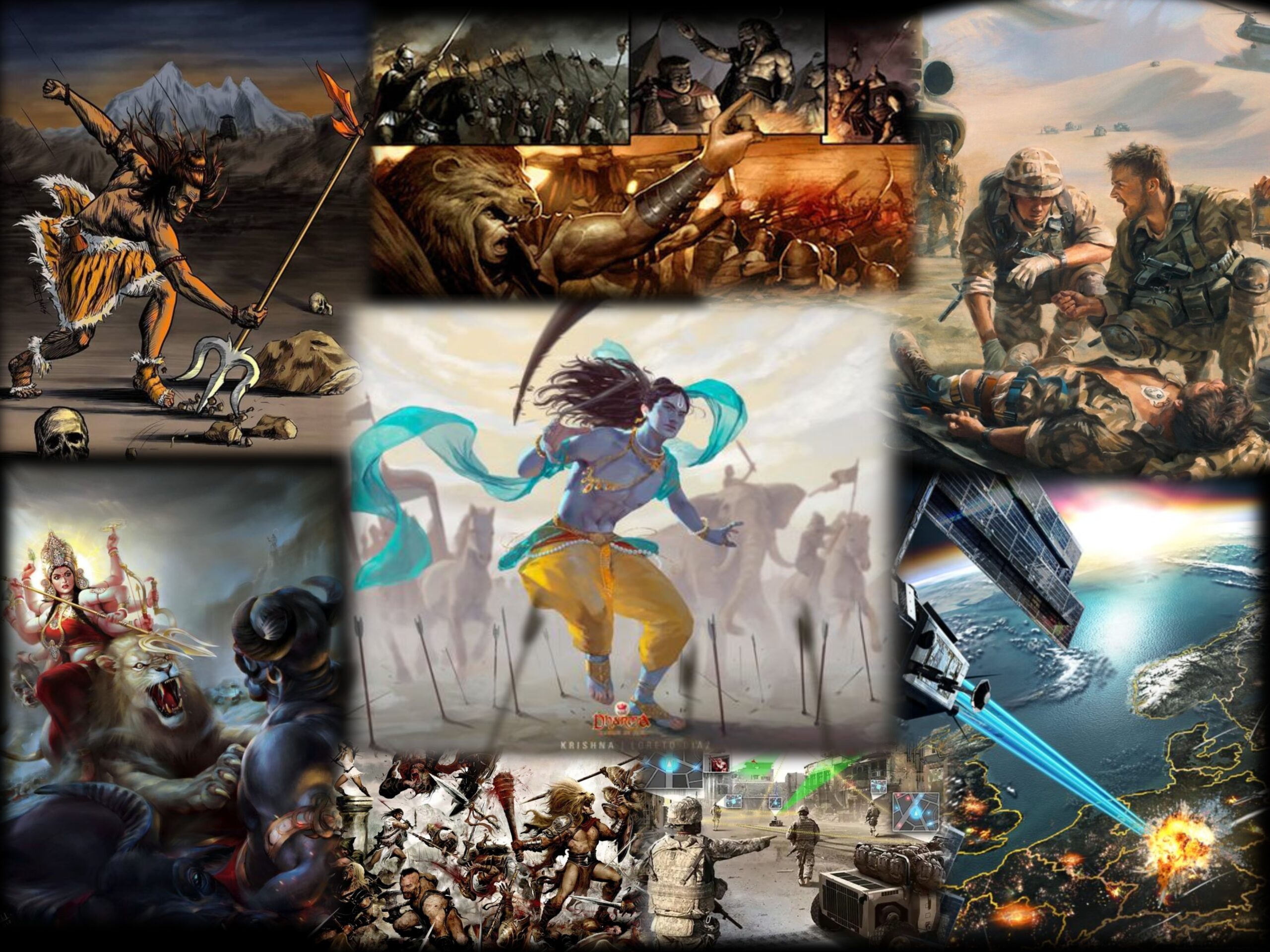
The article is on the analysis and further exploration of Chapter V: Kurukshetra from “Essays on The Gita” by Sri Aurobindo

kalo ’smi loka-ksaya-krt pravrddho
lokan samahartum iha pravrttah
rte ’pi tvam na bhavisyanti sarve
ye ’vasthitah pratyanikesu yodhah
Time I am, the great destroyer of the worlds, and I have come here to destroy all people. With the exception of you [the Pandavas], all the soldiers here on both sides will be slain.“
(The Bhagavad Gita)


‘War is the core of all principles’– as claimed by the Greek philosopher Heraclitus. It ascertains the destinies of every human existence. Apart from the lamentable moments of destructions, the wars are perquisites of all that is coming to be, as Heraclitus asserts. The entire cosmos, society, and people had to get along due to this opposing, savaging, and bloody course of action. Nevertheless, the pursuit and results of these burning bridges are harmonious, well balanced, and last but not the least beautiful.

Here as well, the Upanishads left no stone unturned. The ancient Indian minds got their head around “death” as a façade of hunger, the ultimate Lord, and creator. They named the horse of the yajna or fire sacrifice as the metaphor of living beings. Besides, the nomenclature for the “matter”- had its common meaning as the “food”. This is in view of the fact that matter consumes matter- creature devours creatures. “Eater eating is eaten”- the basic food chain of this material world, without any question. It is rediscovered by the Darwinians that this has been the elementary truth behind the struggle of life, the law of evolution.
“War essential. It is vain rhapsodizing and sentimentality to continue to expect much (even more, to expect a very great deal) from mankind, once it has learned not to wage war. For the time being, we know of no other means to imbue exhausted peoples, as strongly and surely as every great war does, with that raw energy of the battleground, that deep impersonal hatred, that murderous coldbloodedness with a good conscience, that communal, organized ardor in destroying the enemy, that proud indifference to great losses, to one’s own existence and to that of one’s friends, that muted, earthquakelike convulsion of the soul”- by Friedrich Nietzsche.

Whatever might a person turn into in his initial or final stage, in the course of evolution of his personality, at the mid-stage, he is ought to be a warrior. Nietzsche has pointed to us the reality of the world, which we often try to cast away. Those who run on fumes by accepting the life, love, truth, knowledge, and beauty of the world (Shiva) and brush aside the terrible face of death (Rudra) – give birth to cowardliness and inertness. Moreover, if we do not have the courage and honesty to figure out this world straight forward, we can never get over to the dissonance and conflict of the whole nine yards. There must be a hidden truth underpinning this imbalance- understanding of what can be of great use to clear up the balance and lay the foundations of greater truth for us. It is already witnessed beyond doubt that the ethics, morality, society, politics, and nurturing of knowledge can never end up without facing any clash far cry from the other side.
There are many groups who are giving rise to destruction, corruption, shame, and oppression. It is quite foolish just to apply soul force on them. The devastations brought by the demonic forces- are much lesser than the devastation brought due to applying soul force against them. Those who only see actions and its results for a limited period of time understand that the application of soul force in certain cases brings about more devastation. This is because of the rampage of the demonic force continuing on the other side. Only the sin cannot be destroyed. The devil is in the details. There are many things that are existing and living due to that sin. If we do not destroy those snowball effects, they themselves are not less than any destruction.
Lets’ look at a popular story of conflict, taken from the Indian Puranas. Sage Vashishtha was the brainchild of Brahma, husband of Arundhati, and the priest of Ikshvaku race. On the other hand, the son of Kushik the Kanwakubjua’s ruler was Gadhi- whose son Vishwamitra was an all-qualified king. In wisdom, education, and intelligence, he turned popular across the world.

One fine morning, Vishwamitra, with his military force, entered the forest to hunt. Tired by chasing, hungry and thirsty, the king came across Vashisthas’s hermitage. Getting a glimpse of an adorable place, the king became glad. Beholding the king coming, the sage got engaged in serving the guest. Seeing the tired army, the sage called his all wish-fulfilling cow Kamdhenu– “Look, Oh mother, this huge army of the king is my guest today. Please give away all they want”.
Getting the order of sage Vashishtha, Suravi, the cow roared and willingly brought almost everything required- delicious food of different varieties, fit well to be “chewed, sucked, licked and drunk”, various treasures of gems, dresses, ornaments, garlands, flower, perfumes, amazing beds, and seats. She fulfilled everyone’s desires and made them extremely happy. The episode made Viswamitra surprised.

-In the heat of the moment going to Vashistha, he said. “I will gift you one crore cows, and I will beset their hoof with gold. In return, please hand over this cow to me. If you want more, I am ready to give you half of my kingdom-elephants, horses, infantry, anything you want… I am ready to give anything in return for this cow”.
-Vashistha just denied. He said, “I will not sacrifice my daughter. She is here for the sake of Gods and guests”.
-With raging inferno in heart, Viswamitra managed to mask his emotions and blurted out in a willful smile, “Oh wise man, you are Brahmin by the cast. There is no necessity for such kind of stuff for you all. This only befits at the house of the royals. What will you do by keeping her at this abandoned rubbish forest? If you don’t surrender this to me from your own, I will apply my power, and acquire this anyhow, by whatever way necessary”.
-Vashistha unfazingly answered, “You are definitely the almighty of this land and all the army is at your back. Can do whatever you want, I’m just a hermit. What more will my power be? Get your act together!”. Hearing that Vashistha just threw some serious shade ordering all his men, “Tie up Kamdhenu and bring that in front of me”

Listening to that, the army really crossed the boundary of shame tying a rope around Kamadhenu’s neck and made her move by slashing her up repeatedly. Nonetheless, she did not make any move despite the strong beating. With tears in eyes, she stared at the face of the sage with total distress.
-The sage uttered compassionately, “Nandini, what do you expect from me. I am unable to tolerate your pain. I am a mere ascetic. What can I do for you? The king wants to rob you by force.”
At that time, the men had already captured the calf of Kamdhenu, made the matters worse and tied the neck of the child, dragging in front of his mom creating a perfect storm. Seeing the suffering of her child, the mother started crying on Vashistha. She broke down and said, “Oh master, I’m shaking! The lashes and abasements of the army have made me and my son orphan. Why fight shy of that? Please tell me what I shall do now?”. Being sad, the sage replied, “The power of Khastriya is vigor and the power of Brahmin is forgiveness. O Kalyani, the bringer of fortune, I have not left you. If you can stay here with your own power, then stay here. Otherwise what more can I say?”

Hearing that from the mouth of the sage, the Payaswini, the milch, got out of hand and turned furious! Keeping her face in the front, the cow started to expand her dimension with tremendous mooing and started to chase the army. From various parts of her ginormous body, a different set of warriors of diverse race, ethnicity, and culture started to originate. From her leg came the Pahlavas with fierce weapons in hand; from her body fluid came out an array of hunters; from her two sides came the Kiratas and Yavanas. Many armies came out from her saliva and from her four legs numerous Smleccha warriors came out. At a glance, they started to beat off the men of Viswamitra. A terrific battle took between the two. Against a single man of Viswamitra, there were five for Vashistha winding up with full energy. Paying for their deeds, the men of Viswamitra’s military broke the rhythm and started to run away. Running like the wind and chasing them from behind, the men of Vashistha banished the king’s military. The troop of the sage sent them outside the forest and returned back and paid obeisance to the sage, who was now glad to see the backoff.
Thus, it is seen that whenever we use soul force against anybody who is applying Force of Karma or act against us, there can be some irresistible force coming against from the third side to get back at. Viswamitra applied military violence on Vashistha, and in return, Vashistha applied soul force. As a result, all the Hunas, Sakas, and Pahlvas and other races and communities outside the Vedic society jumped on the attackers.
Whenever any community just deploys soul force and not so woke about all the attacks, tyranny and oppression, then there are always other terrible forces that make the situation even worse by taking vengeance. Those who are performing sin, declaring wars, and oppressing, if not checked with war or muscle power, bring much more punishment and destruction. Further, if we ourselves fail to pull out the root of violence, the violence will never get totally eradicated from the world. The amount of destruction brought due to idleness, inaction, and inertness is much greater than that of war and battle. If any person refrains from war, it might make him a moral individual, but this will never uproot the rules of war from the world!

The influence of principles of war has been irresistible at every part of the world. As on one side, war leads to conflict and estrangement, on the other hand, it gives rise to help and love. The power of love is no less than selfishness. Men not only cooperate just to help others, they also come together to defeat the enemies. Thus, cooperation can lead to the establishment of war and pride. Hence, love is always acting as the power to destroy. Love for the good has brought forth too many wars, killings, and destruction.
It was suggested by some evolutionary psychologists over the fact that we wage war naturally, as we are embodied with selfish genes that seek further replication. Hence, we try to grip the resources that make us survive and fight against the other groups that prove to be dangerous for our existence. Nonetheless, this analysis is a bone of contention, as it never proves the fact that how there has been an apparent lack of warfare in the pre-historic society and different relative lack of conflict in various hunter-gatherer communities. However, it cannot be denied that on a societal level, the conflict between various groups brings the sense of unity, leads to behaving compassionately, and stays with honor, self-sacrifice, and reveals higher human qualities, as one is under collective threat. Not only the army but also the entire community gets bonded together. William James, the first psychologist to demonstrate “war”, the author of the seminal essay named ‘The Moral Equivalent of War’, coined the term “discipline”, indicating a sense of cohesion having similar communal goals towards the service of greater welfare.
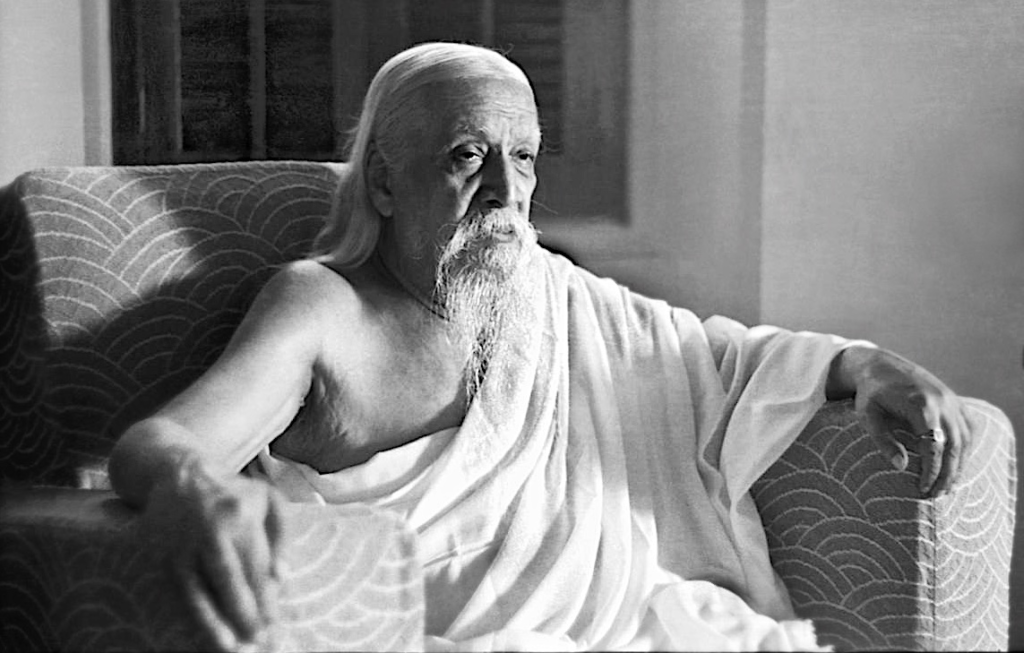
At the personal level, war makes us feel more alive, awake and alert. As per the view of James, “it ‘redeem[s] life from flat degeneration.’ Moreover, it gives us purpose and meaning, going beyond the monotony of daily life. “Life seems cast upon a higher plane of power”. In this age, the development of democracy, nuclear deterrent and especially sports as the “moral equivalent of war”-as mentioned by James, are some salient factors getting around for the rise in peacefulness. Apart from this, the rise of international trades, communications, and the Internet are also capturing the worth mentioning place values. Thus, empathy has been rising, and moral inclusions are promoted. However, it must be reminded that perpetuating overconfidence of human psychology to control and secure the self-invented technologies or war innovations like missiles, nuclear weapons, artificial intelligence, and so on, had been giving rise to complacency. Besides, like the unsolved Hilbert’s problems, here the security and the future of various war technologies have also been raising various ethical and political debates regarding what type of community we will be leaving for future generations.
Hence, as we concentrate more and more on this philosophy, it would actually become tiresome for us to consider the world to be a cracking peaceful place to live at any point in time. Many people die just for the sake of the nation. As soon as the effect of their noble cause is finished, it is seen that people within the nation is indulged in snatching another person’s independence. Clearly, in this tug-of-war between war and peace, there is an underpinning formula to control it, definitely not in the tip of the iceberg- that we are yet to know in this era.
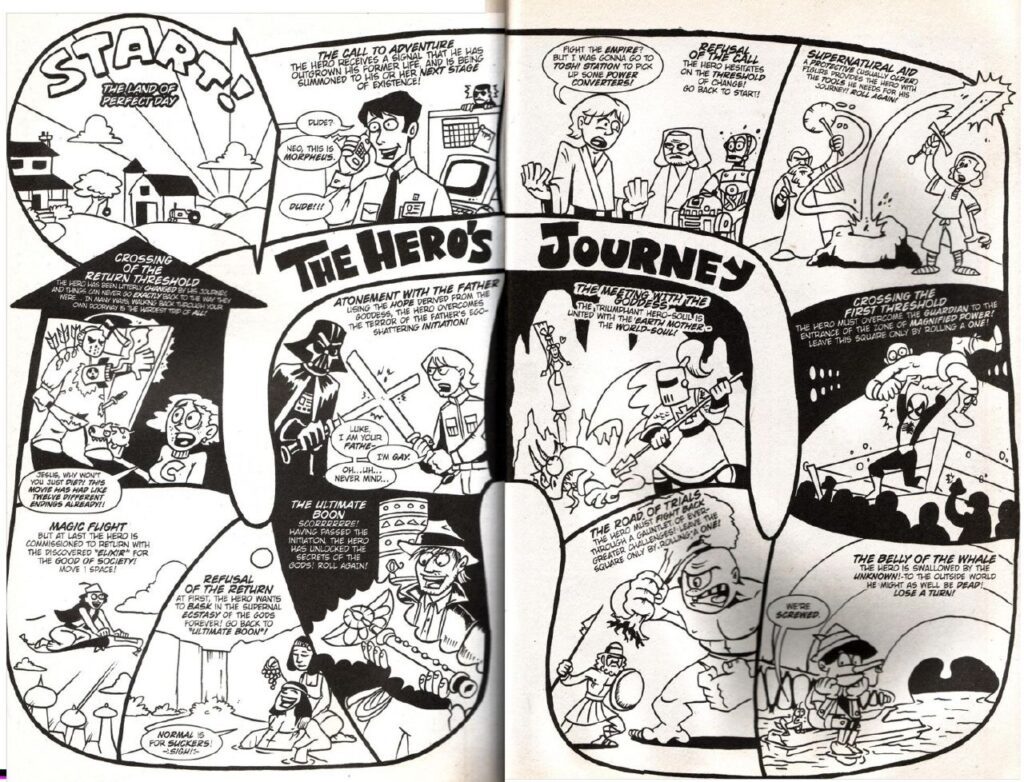
“Well, there are two types of deed. One is the physical deed; the
hero who has performed a war act or a physical act of heroism ñ saving a life, that’s a
hero act. Giving himself, sacrificing himself to another. And the other kind is the
spiritual hero, who has learned or found a mode of experiencing the supernormal range
of human spiritual life, and then come back and communicated it. It’s a cycle, it’s a
going and a return, that the hero cycle represent”- by Jospeh Campbell

Let’s have a peep into another tale from Greece. Heracles was a powerful ledge of Greek Mythology. The Romans used to call them Hercules. He was the son of Zeus and Alcmene. He had a strong belief that no one can defeat him ever! Due to his wonderful contribution against the war with minions, the people made him marry Megara, the daughter of King Creaon. He was very much affectionate towards his wife and children. But his stepmother shot his brain up making psychologically disturbed, forcing him to slay his own children and wife. In anger, losing his marbles, he decided to commit suicide. Later, by fulfilling the orders of Eurystheus, the blessing in disguise he decided to make himself pure. The tasks were
1. To kill the lion of Nemea
2. Kill the nine-headed Lernaen hydra
3. Bring the Artemis’ hind with golden horns.
4. Slay the boar from Mount Erymanthos.
5. Clear the stable of Augean in one day time
6. Kill the Stymphalian birds
7. Capture the bull of Poseidon.
8. Steam man-eater Mares of Diomedes.
9. Obtain the girdle of Hippolyta, queen of Amazon
10. Capture the cattle of Geron, the monster
11. Stealing Hesperides’s golden apples
12. Capture and bring Cerberus.

All these slogs can be seen as an adventure of its own. These are individual cycles. Here, Eurystheus can be seen as a great sage or initiator. Heracles was been guided by him through this overall process of atonement. As the tasks are finished, he reaches the home of gods, the great Mount Olympus! He pays the price to his mother and then lives an immortal life with eternity. This journey towards the war can also be seen as necessary boons. It can be ensured that he has saved for him many a life being mortal, despite the surmise that he has actually shared the boons with the society. The aforementioned laborious tasks are symbolic. The number twelve denotes the circles, way towards existence, the axis of this world, the hours in a clock. In the same way, the entering Eurytheus’s house can be seen as the “birth”, goes after the examinations as “death” and reemerges with the everlasting life as the “rebirth”. This is the path of the “Hero’s Journey”.

However, Debashish Banerji (Haridas Chaudhuri Professor & East-West Psychology Chair; Doshi Professor of Asian Art East-West Psychology) comments in this scenario that the goal of life is not a continuation of war, but war is a waker of aspiration for the law of Vishnu. So the concept of war to be the ultimate solution may be misleading. Sri Aurobindo says that we are not ready for peace because we haven’t tackled the problem of our emotions psychologically. Under the circumstances, pacifism as a mental ideology is ineffective and fails to see the vitalistic truth of war. But he also speaks of a refinement of conflict, conflict resolution, psychological means of overcoming hate and anger and the eventual replacement of the law of Rudra by the law of Vishnu. Yes, before that happens, it is better to acknowledge the need for war when it is necessary than reject it. This is the lesson of Kurukshetra, but it comes with an aspiration for a future of integral harmony.

Apart from the Indians, there are few who have openly declared that creation, sustenance, and destruction of this mysterious world is the task of one frenemy. The power of the world is not always the “All-good” Durga, but it is also congruent to Kali– the dancing, devastating and destructive one. The coefficient (which unites in action to produce a given effect) of life /Kurukshetra, himself is the charioteer or guide and the creator of living life. Through all these turmoil and conflicts, starting from global to the system, societal, household, relationship, and professional till petty personal level, to what Godliness is He taking us into? For the better good? We have to sort out by our own in which way we are going, how and for what?
And to understand this, we have to understand the world, accept the bitter truths of the war and death. Then, only we can be clear about our destiny, aims, and fate-awaiting in front of us. We have to accept Kurukshetra! Before attaining salvation, immortality, living life in the fast lane or whatever, we need to consider our inconstant period or life as the crunch time to make certain that through death is life. This is where we have to step up our game by bending the head down in front of the reality and standing in front of the master of Time and Death with full courage.
YOLO, we should never get scared like Arjuna!

Where the mind is without fear and the head is held high
Where knowledge is free
Where the world has not been broken up into fragments
By narrow domestic walls
Where words come out from the depth of truth
Where tireless striving stretches its arms towards perfection
Where the clear stream of reason has not lost its way
Into the dreary desert sand of dead habit
Where the mind is led forward by thee
Into ever-widening thought and action
Into that heaven of freedom, my Father, let my country awake.
~~Poem by Rabindranath Tagore
Originally published at MyIndMakers (https://myind.net/Home/viewArticle/bhagavad-gita-and-mahabharata-analysis-of-chapter-v-kurukshetra-from-essays-on-the-gita-by-sri-aurobindo)
Content courtesies:
1. Chapter V, Kurukshetra, Essays on the Gita, Sri Aurobindo
2. গীতা নিবন্ধ, শ্রীঅরবিন্দ
3. বিশ্বামিত্র বশিষ্ঠ বিরোধ, http://mahavarata.blogspot.com/2016/08/blog-post.html
4. http://parimalanathan.blogspot.com/2016/11/gita-1131.html
5. Human, All Too Human, By Friedrich Nietzsche
6. Historyextra, https://www.historyextra.com/period/20th-century/have-nuclear-weapons-helped-to-maintain-global-peace/
7. The Psychology of War, Steve Taylor Ph.D., https://www.psychologytoday.com/intl/blog/out-the-darkness/201403/the-psychology-war
8. Transcript of The Power of Myth episode 1, https://www.studocu.com/en/document/studocu-university/studocu-summary-library/summaries/transcript-of-the-power-of-myth-episode-1/1044500/view
9. Comment by Debshish Banerji
Center for Indic Studies is now on Telegram. For regular updates on Indic Varta, Indic Talks and Indic Courses at CIS, please subscribe to our telegram channel !
- 23 min read
- 2
- 0








